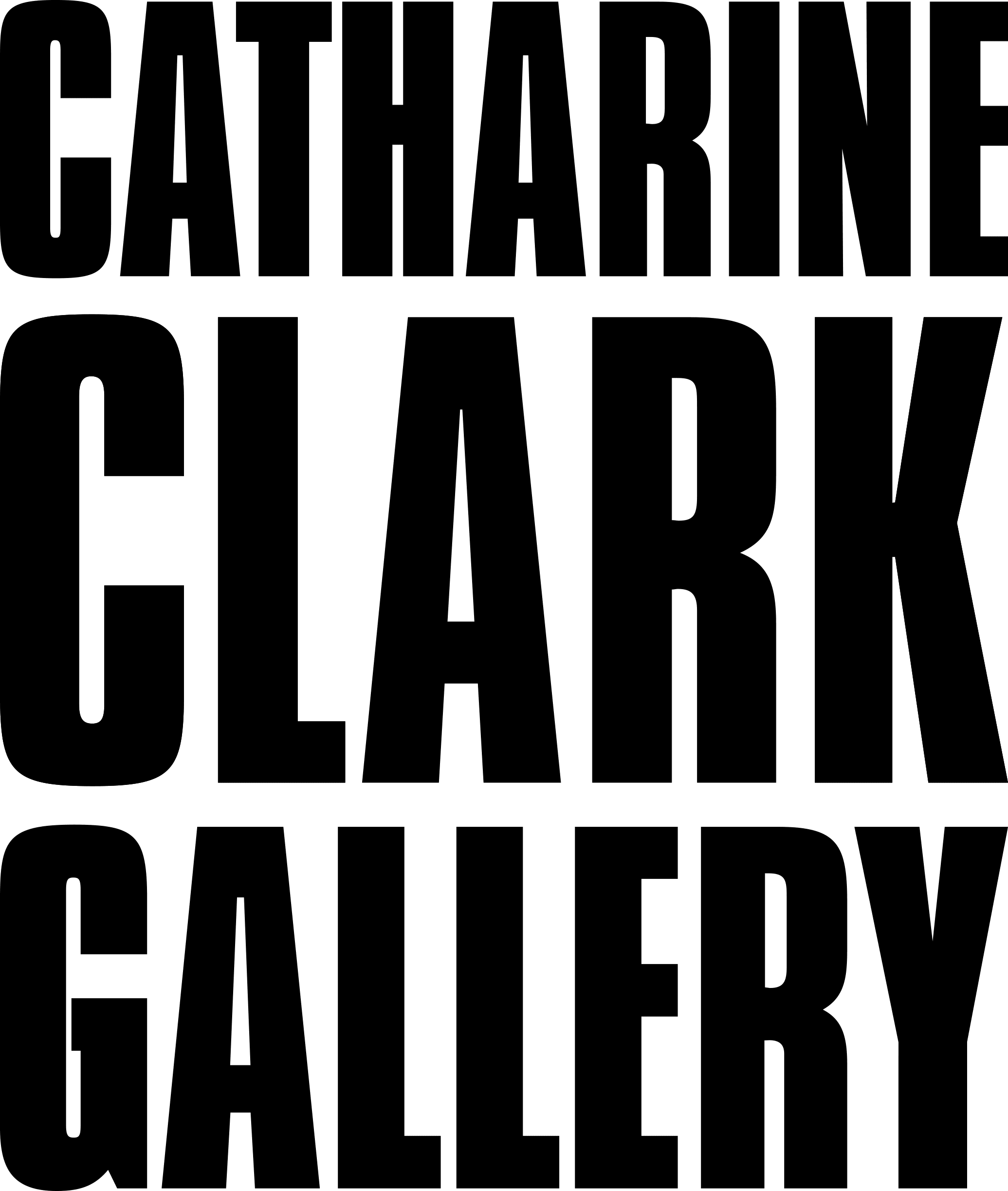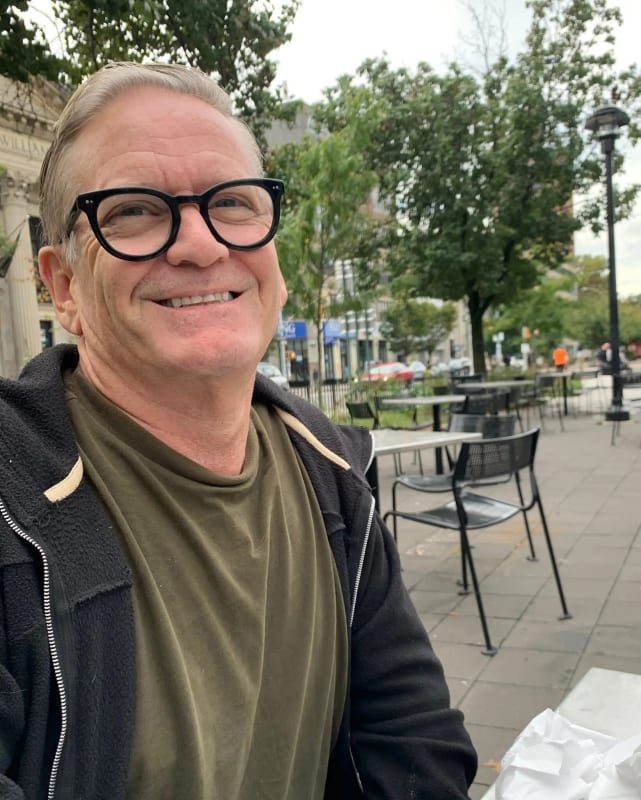Chris Doyle, a multimedia artist who made poetic and beguiling pieces — exquisite animated work that explored ideas about civilization and evolution — and who once gilded a stairway to the Williamsburg Bridge in New York City, died on July 22 at his home in Blue Hill, Maine. He was 66.
His husband, Timothy Houlihan, said the cause was a cardiac event.
A painter with a master’s degree in architecture, Mr. Doyle thought of buildings and machines as objects imbued with emotion, and he used all sorts of media to make inanimate things come to life. He was interested in systems — from the natural world to the technological.
Mr. Doyle drew inspiration from Charlie Chaplin’s film “Modern Times,” in which Chaplin’s tramp character labors in a factory making mysterious and useless products, and from the work of the Hudson River School painter Thomas Cole. He was also influenced by Disney animation, William Morris wallpaper, Persian miniatures, illuminated manuscripts and the extraordinary environments of Kurt Schwitters, the early-20th-century German artist who turned his home into a livable sculpture.

In a series of short films made from 2004 to 2007, Mr. Doyle used stop-motion photography to animate hotel beds, their sheets and pillows scooting this way and that, accompanied by various aural symphonies: ambient tones, metallic clattering, rustling noises. In one film from 2003, lawn chairs and a garden hose run amok.
In 2014, imagining Times Square before civilization came along, Mr. Doyle created a fantastical animation he called “Bright Canyon” — a vibrant gorge filled with psychedelic patterned creatures, exotic greenery and cascading waterfalls projected on the billboards there. It was one of his many public artworks.

The next year, for an installation at Wave Hill, the public garden and former estate in the Bronx, he made huge geometric sculptures that projected animations based on the aquatic garden surrounding them: light sparkling on the water’s surface, goldfish on the move, kaleidoscopic images of waterlilies and other natural phenomena. The piece was accompanied by music composed by Jeremy Turner, with whom Mr. Doyle often collaborated, and performed by Brooklyn Youth Chorus. In preparation, Mr. Doyle spent a year getting to know the water garden, sitting for hours beside it.

“His work encourages the experience of shape-shifting physical and psychological spaces we previously thought of as fixed,” Kathleen Forde, a curator with whom he frequently worked, said in an interview. “To provoke us to see the world from a different perspective, which to me relates to empathy. What happens if you look at the world in a different way?”
She added: “His work often contains suggestions of portals to another world. I don’t know if it was to his chagrin or not, but I recall describing that to him as Narnia on acid.”

For a show Ms. Forde curated in 2010 at the Experimental Media and Performing Arts Center in Troy, N.Y., Mr. Doyle filmed local skateboarders and then transformed them into animated silhouettes that he projected onto the building. In that installation, called “Method Air,” it looked as if they were flying in and out of the center’s windows.
It was one many videos Mr. Doyle made that grew out of his frustration at not being able to fly, except in his dreams.
“Swell,” an animation exhibited in 2017 at the Catharine Clark Gallery in San Francisco, shows a civilization evolving from industrialization to a strange digital future. An ode to labor in service of itself, featuring people working to produce inscrutable objects, the piece is at once both merry and hopeless.

Mr. Doyle’s work about work may seem dystopian, Mr. Houlihan said, “but the thing is, he loved to work.”
Mr. Doyle was his own perpetual-motion machine, said his friend Jonathan Lethem, the novelist: “He was manic, but in a charming way. He never stopped moving.”
One of Mr. Doyle’s most recent works, “The Coast of Industry,” a 300-foot-long animated installation shown last summer at the Massachusetts Museum of Contemporary Art in North Adams, was an epic of industry, a Rube Goldberg-like world involving a medley of machines embedded in nature that whirred and twisted and bustled along, performing mysterious tasks over and over again, from dawn to dusk. (Mr. Turner also composed the music for this piece.) Many museumgoers sat for hours in the beanbag chairs placed there for that purpose, unable to tear themselves away.
Mr. Doyle was humble about his endeavors, but he told the curator of “The Coast of Industry,” Denise Markonish, “I think I might have done something really good.”

Christopher Doyle was born on July 6, 1959, in Easton, Pa., one of five children of Marie (Welby) Doyle and Eugene Doyle, who worked at Ingersoll Rand, a company that made air-compressor products among other things.
His father moved frequently for his job, and Chris grew up in nine states, finally graduating from high school in Moscow, Pa. He earned his undergraduate degree at Boston College, where he majored in art and biology, and received a master’s in architecture from the Harvard Graduate School of Design in 1985.
Mr. Doyle worked in the offices of the architect I.M. Pei in Manhattan for 18 months and then spent a year in Rome on an architecture fellowship before returning to New York. He had decided that he would rather be an artist than an architect, though the two disciplines sometimes merged in his work.
In 1996, he was commissioned by New York City’s Public Art Fund to make a site-specific work. He chose to gild the steps of a decrepit pedestrian stairway on the Manhattan side of the Williamsburg Bridge, which was then under renovation. It was a bleak spot, pocked with graffiti, trash and hypodermic needles. Mr. Doyle, he told The New York Times, “thought it would be nice to give the community some gold.”

Indeed, over the years flecks of gold leaf stuck to commuters’ soles and disappeared into the streets. (Mr. Doyle received a $5,000 grant to produce the piece, plus a $2,500 artist’s fee; he spent all of that to buy the materials, which included 11,500 three-inch squares of 22-karat gold leaf. The steps were demolished in 1998.)
Mr. Doyle and Mr. Houlihan, a history professor and administrator who is now retired from St. Francis College in Brooklyn, met in 1997 and married in 2017. In addition to Mr. Houlihan, Mr. Doyle is survived by a daughter, Eva Garred Doyle, from his marriage to Eileen Garred, which ended in divorce; his mother; and four siblings, Paul, Gregory and Erin Doyle and Mary Claire Straub.

For a decade, Mr. Doyle and Mr. Houlihan lived on Kent Avenue in Williamsburg, Brooklyn, in a former matzo factory near the East River famously colonized by artists. When the two men moved in, the windows in their space were bricked up, and there was a pile of old toilets, but no functioning bathroom.
“He promised me it would be glorious, and it was,” Mr. Houlihan said.

They moved to Maine full time this summer, to a house they had bought nine years ago. The house might be Mr. Doyle’s most enduring work: a 1920s artist’s studio he embellished outside with driftwood that looks as if it is growing along the shingles, poking through windows and walls. He tiled a bathroom and pantry from floor to ceiling — including an entire refrigerator — using Legos Mr. Lethem’s children gave him. Painted vines curl about the living room ceiling, which is bright red. The kitchen looks like a Cubist shadowbox.

At his death, Mr. Doyle had just started on the second floor, which he conceived of as a forest, crafting a papier-mâché head for a moose that looks as if it’s bursting through the wall.
His woodpiles should make Andy Goldsworthy jealous.
“It was like living inside his mind,” Ms. Markonish, the curator, said of the house, which she visited in July. “A complete merging of life and work. He was painting the whole time I was there, and I said, ‘When you’re finished, you’re just going to start again.’ And he said, ‘Of course.’”

People, Mr. Doyle said in an interview with Ms. Forde in 2010, “go to great lengths to achieve a state of transcendence.” He added, “I am actually more interested in the aspiration than the state itself. Humanity is revealed in the trying. My experience of being human is expressed in my failure to be more than human.”
In 2005, Mr. Doyle made a stop-motion animation of himself soaring through his Brooklyn studio and out the window. He created it using 225 photos of himself leaping about.
“I then took these failures,” he said, “and strung them together into a creaky, particularly human kind of success.”



